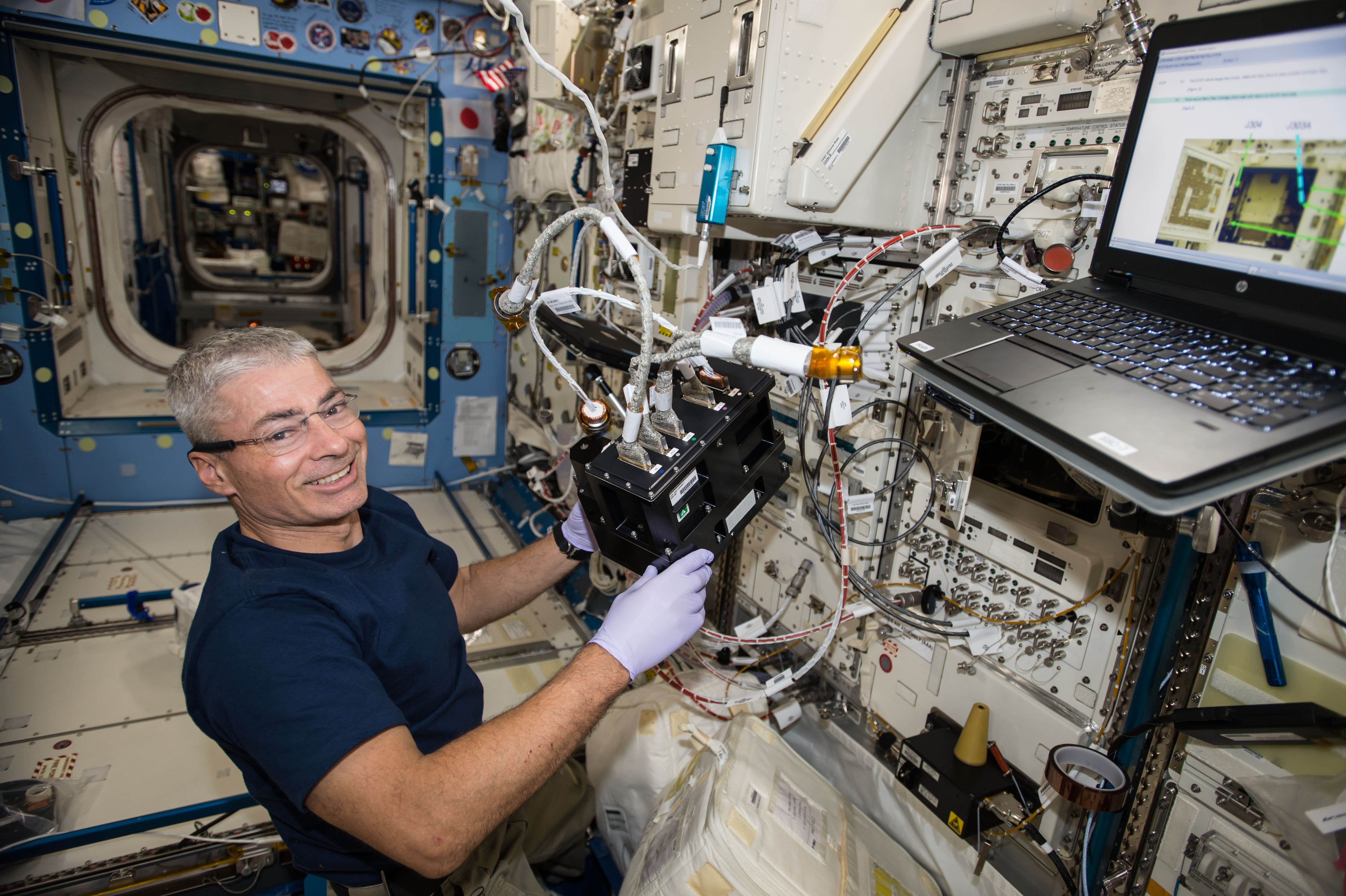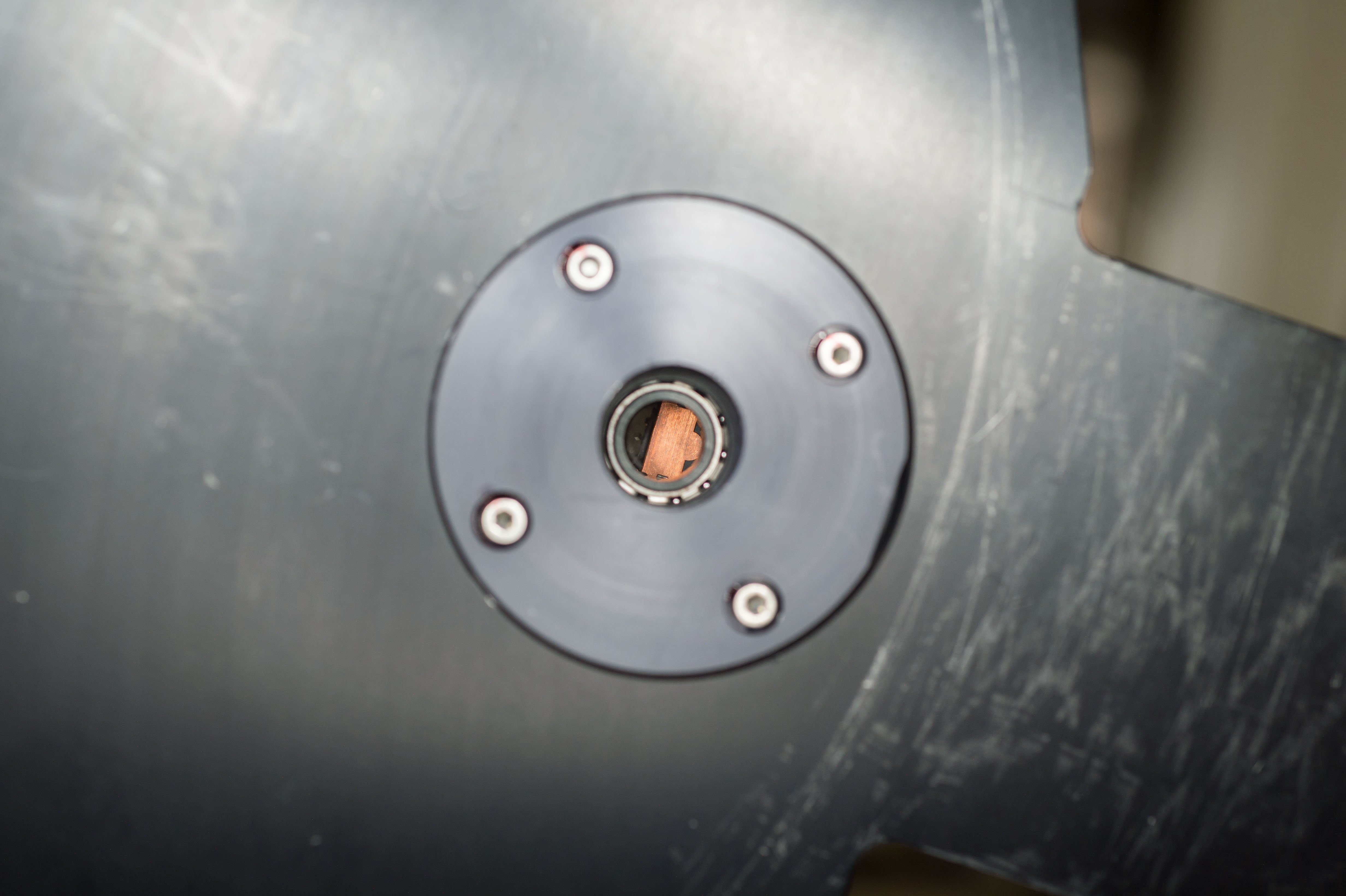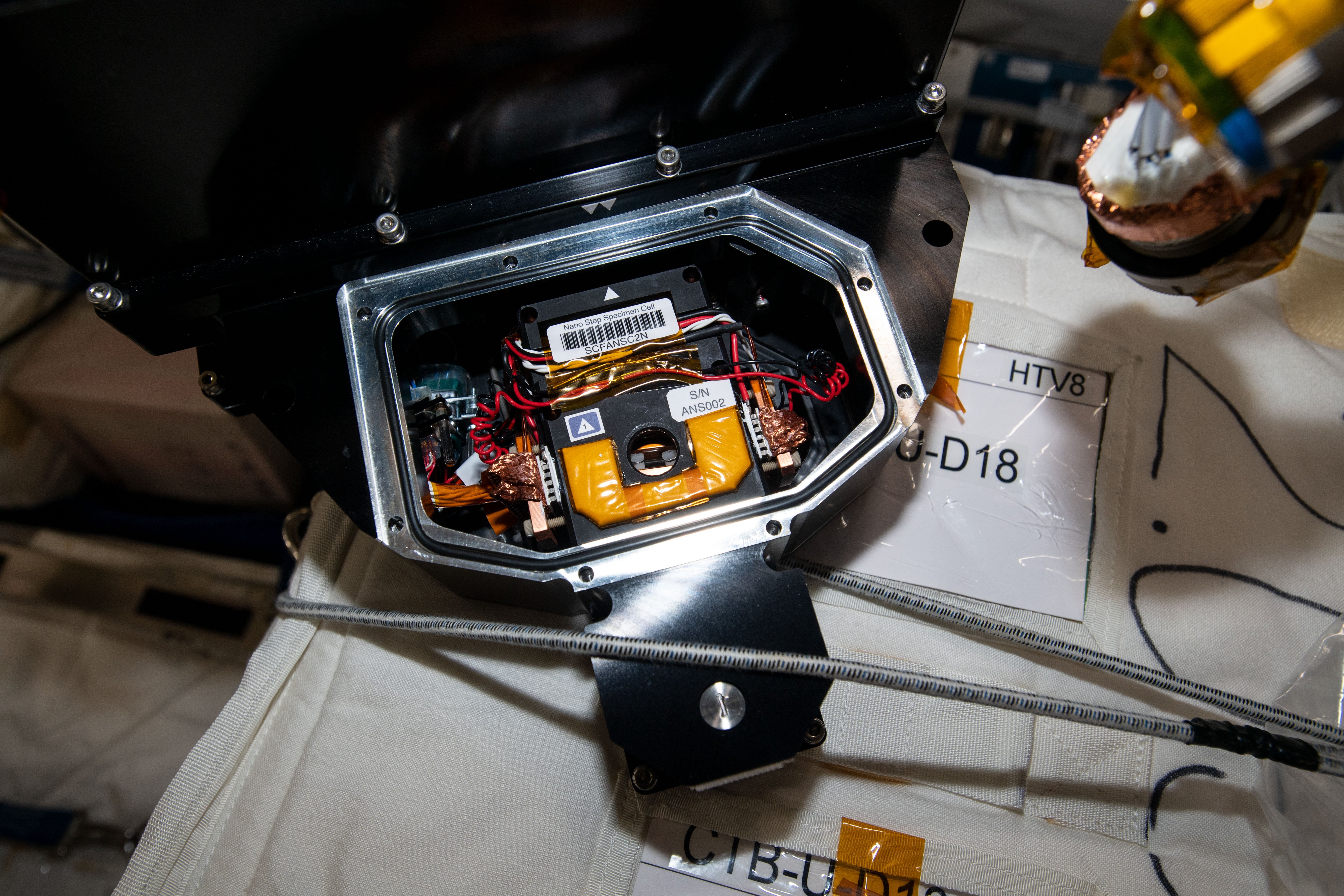- post-flight analysis
[AdNano]
Effects of impurities on perfection of protein crystals, partition functions, and growth mechanisms
- Physical Science
ISS Science for Everyone
SCIENCE OBJECTIVES FOR EVERYONE
The Effects of Impurities on Perfection of Protein Crystals, Partition Functions, and Growth Mechanisms (Advanced Nano Step) experiment monitors and records how the incorporation of specific impurity molecules affect the development and quality of protein crystals, as they grow in a quartz cell aboard the International Space Station (ISS). The crystals grown on the ISS are returned to Earth, and characterized using synchrotron X-ray diffraction. The protein crystal and impurity interactions are managed and monitored jointly by both scientists on the ground and the ISS crew.
Experiment Description
RESEARCH OVERVIEW
- With over 20 years of experiments, scientists have found that protein crystals grown in the microgravity environment of space produce high quality crystals. However, the improved success rate of those crystals was at most 20-60% better. The Effects of Impurities on Perfection of Protein Crystals, Partition Functions, and Growth Mechanisms (Advanced Nano Step) experiment aims to improve the success rate, while utilizing shorter sample preparation periods. It is also important to understand what kinds of impurities deteriorate protein crystal quality grown in space.
- The Research Team predicts that the in-situ observational experiments on orbit, combined with the X-ray diffraction experiments on the ground, shows the quantitative relationships between the grown crystal quality and the controlled growth conditions, namely: super saturation, impurity size and concentration, and the partition coefficient.
DESCRIPTION
The novel protein crystal growth protocols based on the crystal growth mechanisms have an impact on protein crystal growth physics and structure based drug-design. The impurities involved in the crystals adversely affect the crystal perfections. During crystal growth, the transported impurities attached on the crystal growth surface reduce the growth rate, since the impurities act as an obstacle for the growth step. The Effects of Impurities on Perfection of Protein Crystals, Partition Functions, and Growth Mechanisms (Advanced Nano Step) Research Team calls the attachable impurity on the surface involving in the solution a killer impurity. The size of killer impurities is expected to be smaller than that of target proteins, since smaller impurities diffuse much faster than the target protein does in diffusion-limited condition. Advanced Nano Step project aims to give proofs on this hypothesis; the quality of a target protein crystal grown with smaller impurities in space would become lower than that grown on the ground.
Use of Michelson and Mach-Zehnder interferometers equipped in the NanoStep test piece gives the realistic successive crystal growth step morphology, and its time developments, allowing calculation the step velocity. The time development of the interferometer images on the crystal growth surface also produce the crystal surface growth rate. The supersaturation degree of the solution is also an important parameter for controlling the growth rate. The crystal growth rate, step velocity, and step morphology represents the impurity density of the crystal growth surface. Comparing the crystal quality measured by the X-ray diffraction experiments with changing the growth conditions, produces the preferable growth conditions, as well as the role of the killer impurity.
Media Gallery




Applications
SPACE APPLICATIONS
Advanced Nano Step uses the NanoStep test equipment with which researchers were able to observe the growing surface of protein crystals directly in space for the first time (in the NanoStep project conducted in 2012). In-situ observation of the growth interface of the crystals enables researchers to measure normal and lateral growth rates, nucleation rates, and observation of the surface morphology of the crystals. These kinds of information have not been realized before, and may advance capabilities for the research and production of materials and drugs in space. This research contributes to a working body of knowledge concerning the biochemistry of organisms in microgravity.
EARTH APPLICATIONS
Advanced Nano Step utilizes new concepts that can be useful for the purification processes of other impurity proteins coexisting in the solution s before protein crystallization in space. Advanced Nano Step focuses on smaller impurity proteins (lysozyme) which can negatively affect the quality of target protein (glucose isomerase) crystals much more severely than larger ones do. In the case of the larger impurities (the lysozyme dimer in the NanoStep project) owing to their small diffusivities, they can be “filtered” effectively during crystallization processes (target protein was non-dimer lysozyme in NanoStep) in microgravity environments, while smaller ones are much more easily incorporated into crystals due to their larger diffusivities. Thus, for crystallization experiments in space, it is expected that smaller impurities should be excluded rigorously, while the larger ones should not require such careful removal. This result would show that success in Advanced Nano Step could halve the efforts to exclude several impurities before launch. This knowledge can also be useful when crystallization trials are conducted with diffusion-limited growth methods on Earth, such as with gel growth methods.
Operations
OPERATIONAL REQUIREMENTS AND PROTOCOLS
As a model target protein, glucose isomerase is used. Protein concentration is measured in the solution at the front of the growth surface. The solution temperature is controlled at a temperature below 20°C, to change the supersaturation point. The interferometers are also used to observe the crystal surface morphology. ISS crew support is required for the replacement of solution cells.
Publications
PRINCIPAL INVESTIGATOR(S)
SUZUKI Yoshihisa [Tokushima University]
Unless specified otherwise, rights to all images belong to ©JAXA



